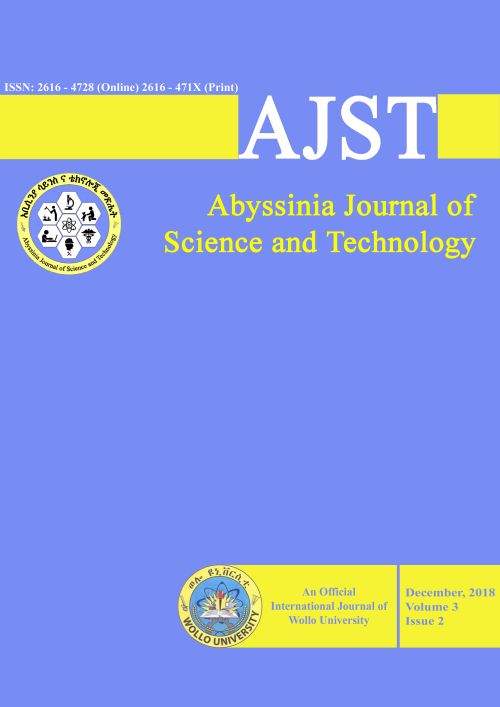Main Article Content
Estimating above ground biomass and carbon stock of Ambiki remnant natural forest, Guangua district, Northwestern Ethiopia
Abstract
Reducing CO2 emissions and carbon (C) sequestration have paramount importance to reverse climate change-induced challenges. Natural forests have great potential to sequester more C; hence, participatory forest management (PFM) has been practiced in Ambiki Remnant Natural forest (ARNF). Despite this, there are limitations of quantitative baseline data to evaluate the effect of PFM on C stock. This study was conducted at ARNF in Guangua district to estimate the above ground biomass (AGB) and below ground biomass (BGB) and C stock of the forest.47 circular sample plots were established through systematic grid distance (500m) having 314m2area. Inventory on diameter at breast height (≥ 5 cm) and Height (m) for 33 species (630 trees) was conducted. AGB of each species was calculated using the recommended allometric equation and BGB was calculated as 27% of the AGB. C stocks of the forest were also calculated as 50% of the biomass. As a result, AGB and BGB of the forest was 226.56 ton/ha and 61.2 ton/ha and the AGC and BGC was also 113.28 ton/ha and 30.59 ton/ha, respectively. Of which, 39.9%, 20.24%, 18.6%, and 19.67% were contributed by Albizia schimperiana, Prunus africana, Croton macrostachys, and others respectively. Our result was lower compared to that of other forests and gained by a few species. Even though, it could be used as baseline information to know additive C via PFM practice in the forest. Furthermore, assisted natural regeneration and integrated management approaches are needed to enrich forest species and sequester more C in short period.







